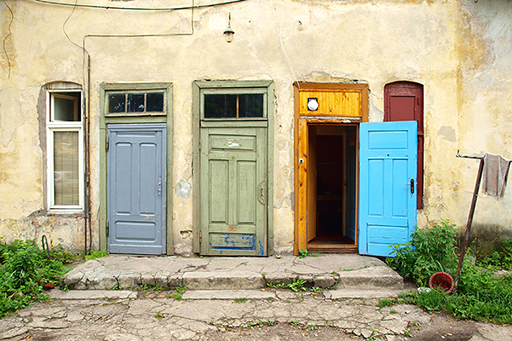Use 'Print preview' to check the number of pages and printer settings.
Print functionality varies between browsers.
Printable page generated Saturday, 22 November 2025, 1:41 PM
Week 1 OER and you
Week 1 OER and you

This week you are invited to open the door and:
- learn what makes an educational resource ‘open’
- explore the pros and cons of using open content
- reflect on your own practice.
1.1 Have you ever ... ?
Not long ago, famous ‘edupreneur’ Alan Levine put out a call for stories of OER reuse: ‘do they really exist?’ he wondered, ‘or am I chasing another Loch Ness Monster?’ One of the people who got back to him was Clint Lalonde, manager of open education at BCcampus. Clint had managed to record a video of something he found in his backyard. Here it is:
How about you? Have you ever used a resource (i.e. an image, a text, a website, etc.) created by someone else? Why (not)?
1.2 Defining OER
You have just watched Clint talking about creating a free textbook for students at BCcampus, how the authors didn’t necessarily write every single component of the book but used images and animations that already existed online. He refers to this textbook as an open educational resource, an OER. In as much as it is meant for teaching and learning, we understand the textbook is ‘educational’, but ‘open’?
What do you think makes Clint’s textbook an open resource? Is it the fact that it is free? Is it because it is available on the internet? Is it because the authors reused the work of others? The following video explains in more detail what open educational resources are.
We can say then that what makes a resource open is the manner in which we interact with it, what we can do with it. In this sense, it was David Wiley who came up with the idea that for a resource to be open, one would have the freedom to:
- Reuse – Use the content in a variety of ways.
- Revise – Adapt, adjust, modify, improve, or alter the content (e.g., translate the content into another language).
- Remix – Combine the original or revised content with other OER to create something new (e.g., incorporate the content into a mashup).
- Redistribute – Share copies of the original content, your revisions, or your remixes with others (e.g., post a copy of the content online for others to download).
- Retain – Make, own, and control copies of the content.
Activity 1
Think about your own work:
- Which of these Rs do you already do?
- Do you have any experience or examples that you would like to share?
1.3 OER good or bad?
Of course, it all sounds great on paper but you may be asking yourself ‘What is it like in real life? Is there an ugly side to OER?’ That is what we invite you to explore next.
Open Washington have written a module about Why OER matters in which they discuss the benefits and challenges in using OER. Their website also includes a series of links to presentations from staff who already have experience of using open content; find some of those here for ease of access.
- The Road Ahead - Open Educational Resources - Touting the Benefits while Recognizing the Challenges by Pat Pickering
- Open Educational Resources: Should I Use them? by Leo Hopcroft
- Pros and Cons of OER by Barbara Jacobs
Activity 2
After consulting the above links, think of your own experience at work and make your own list of the advantages and disadvantages of using OER in your teaching.
- Do you align yourself with the pros or the cons? Why?
1.4 Find out more
Understanding Open Educational Resources, by the Commonwealth of Learning, is a wonderful resource that will tell you probably everything you need to know about OER. Check Sections 1.1 to 1.5 in relation to what we’ve been discussing here this week.
Open educators Catherine Cronin and Viv Rolfe have launched the GoOpen wiki ‘to share resources and approaches with anyone wishing to explore open education’. You are invited to have a look and, of course, contribute to it.
If you are interested in more academic reading, Tita Beaven writes about how three language teachers engage with OER in OER (re)use and language teachers’ tacit professional knowledge: three vignettes.
For the latest research on OER and open education, we suggest you follow IRRODL, The International Review of Research in Open and Distributed Learning, and also Open Praxis, published by the International Council for Open and Distance Education (ICDE).
You can now move on to Week 2 Find and evaluate OER.